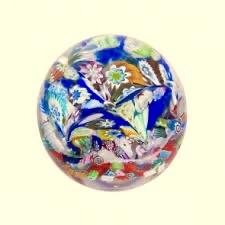We have a great deal in common with animals: we’re born, we eat, we mate, we search for and store food, we die. But animals don’t have accessories. And we do. Sometimes – depending upon the particular person – volumes of them. I am one of those who, I suspect it is safe to say, has an abundance of accessories or at least more than most. And frankly, I wonder why? Does the proliferation speak to some psychosis? Or might it instead speak to a more favourable artistic element? By contrast I know others who are entirely deprived of any such additives or accoutrements. They don’t even have a car!
Accessories are not peculiar to any one group of people. Spanning the list of monarchs and peasants, indigenous and vagabond, white, black and brown skins, girls and boys, young and old – the variety is as endless as the human race. Once again I note with interest that it distinquishes humans from animals that we insist upon exceeding the boundaries of necessity – food, water and shelter – by decorating our environment and ourselves with accessories.
The accessories of which I speak are everything from cutlery and flatware to jewelry and leg bands; from crystal ornaments to crystal decanters; from wooden bowls to bronze sculptures; watches and clocks; paintings and decorative paddles; furnishings and umbrellas; paperweights and embossers. And then there are the endless trinkets which we’ve stored in our desk drawers much like the recent spread of storage shelters about the country.
While there may occasionally be a need for some of this stuff, very often its only purpose is to entertain or divert. And – yes – in some instances the ambition is to show off or to attract attention. But, if one were to insist upon removal or divestment of many of these same accessories, I’m inclined to think there may be resistance. The excuses for keeping the accessories – even when secreted unattended for years in a drawer or a basement locker – are as numerous as the things themselves, everything from memories of a parent to a former romance or just a memorable vacation. At times the accessory may commute a profound artistic attraction – say, a millefiori or a Lalique vase.
There is no denying the symbolism of many of our accessories – including, as I have said, those vehicles we drive (many of which far exceed simple practicality). Naturally there is always the excuse that the accessory imports some favourable poetic or artistic nature but on balance there is seldom an accessory about which we could not bear the deprivation.
As we return to our basic human needs, as we decant and distill our lives, as we age, the importance of accessories commensurately diminishes. Ultimately we return to the ground in the same state and condition as we initially derived. But until that dreadful day we succeed to synthesize our ulterior attractions. We perfect the quality and character of our fleeting ambitions. The nature of our accessories acquires an ephemeral absolution.
